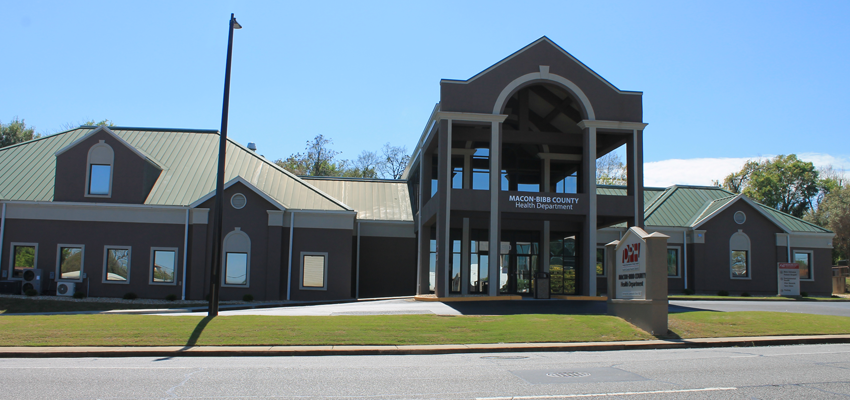The public health entity serving a specific geographical area in central Georgia provides a range of services aimed at protecting and improving the health of its residents. This governmental organization operates at the county level and is located in the city of Macon, functioning as a key resource for local health-related needs. Its mandate includes disease prevention, health education, and the provision of essential medical services.
The significance of this department lies in its direct impact on community well-being. By offering immunizations, conducting health screenings, and managing public health emergencies, it contributes to a healthier population and a higher quality of life for county residents. Historically, such departments have played a critical role in controlling infectious diseases and promoting preventive healthcare measures, adapting to evolving public health challenges over time.
The following sections will delve into the specific programs offered, the resources available to the public, and the department’s role in addressing current health priorities within the community. These details will provide a more comprehensive understanding of the department’s operations and its overall contribution to the health landscape of the region.
1. Immunizations
The provision of immunizations represents a core function of the Bibb County Health Department in Macon, Georgia. These preventative measures serve as a cornerstone in the department’s efforts to reduce the incidence and spread of vaccine-preventable diseases within the community. The department offers a range of vaccinations for children and adults, adhering to schedules recommended by the Centers for Disease Control and Prevention (CDC) and the Georgia Department of Public Health. This availability directly impacts public health by creating herd immunity, protecting vulnerable populations who may not be able to receive vaccines themselves.
The importance of immunizations as a component of the health department’s services is further underscored by its impact on local disease rates. For example, consistent vaccination programs have contributed to the near-eradication of diseases like measles and rubella in the region. Furthermore, the department actively promotes and facilitates access to flu vaccines annually, mitigating the severity and spread of influenza during peak seasons. This proactive approach includes community outreach events and collaborations with local healthcare providers to expand vaccine coverage.
In summary, the Bibb County Health Department’s immunization program is a critical element of its overall public health strategy. It directly addresses preventable illnesses, safeguarding the health and well-being of county residents. The ongoing challenge lies in maintaining high vaccination rates amid vaccine hesitancy and ensuring equitable access to these services across all socioeconomic groups within the community.
2. Disease Surveillance
Disease surveillance is a fundamental function of the Bibb County Health Department in Macon, Georgia, serving as the backbone for identifying, monitoring, and responding to public health threats. This process enables the department to track disease patterns, detect outbreaks early, and implement effective control measures to protect the community’s health.
-
Data Collection and Analysis
The health department collects data on reportable diseases from various sources, including hospitals, clinics, and laboratories. This data, encompassing disease incidence, demographics, and geographic distribution, is analyzed to identify trends and potential outbreaks. Such analysis allows the department to detect anomalies and initiate further investigation, preventing widespread illness.
-
Outbreak Investigation
When an unusual increase in a particular disease or condition is detected, the health department launches an investigation to determine the cause and scope of the outbreak. This involves interviewing affected individuals, tracing contacts, and collecting samples for laboratory testing. The findings inform the development of targeted interventions to control the spread of the disease, such as vaccination campaigns or public health advisories.
-
Reporting and Communication
Timely and accurate reporting is crucial for effective disease surveillance. The Bibb County Health Department reports data on notifiable diseases to the Georgia Department of Public Health and the Centers for Disease Control and Prevention (CDC). This information contributes to national surveillance efforts and allows for coordinated responses to multi-state outbreaks. The department also communicates relevant information to the public, healthcare providers, and community partners to promote awareness and encourage preventative measures.
-
Preparedness and Response Planning
Disease surveillance informs preparedness and response planning for public health emergencies. By monitoring disease trends and identifying potential threats, the health department can develop and implement strategies to mitigate the impact of outbreaks or other health crises. This includes stockpiling medical supplies, training personnel, and establishing communication protocols to ensure a rapid and coordinated response.
Effective disease surveillance is essential for the Bibb County Health Department to fulfill its mission of protecting and improving the health of the community. By continuously monitoring disease patterns, investigating outbreaks, and communicating risks, the department can effectively prevent and control the spread of infectious diseases and safeguard public health in Macon-Bibb County.
3. Health Education
The Bibb County Health Department in Macon, Georgia, integrates health education as a vital component of its public health mission. Health education initiatives directly impact the community’s understanding of disease prevention, healthy lifestyles, and access to available resources. A primary cause-and-effect relationship exists: insufficient health knowledge can lead to poor health outcomes, while effective health education can promote positive behavioral changes and improved well-being. The department’s health education programs are designed to address specific health needs within the county, utilizing various channels to reach diverse populations.
For instance, the department conducts educational workshops on topics such as diabetes management, prenatal care, and smoking cessation. These programs equip individuals with the knowledge and skills necessary to make informed decisions about their health and manage chronic conditions effectively. Furthermore, the health department collaborates with local schools, community organizations, and healthcare providers to extend its reach and deliver tailored health messages to specific target groups. A real-life example includes the department’s initiative to educate adolescents about safe sex practices and sexually transmitted infections, contributing to a decrease in local STI rates. The practical significance of this understanding lies in its ability to empower residents to take control of their health and contribute to a healthier community overall.
In summary, health education is an indispensable function of the Bibb County Health Department. By providing accurate and accessible health information, the department empowers residents to make informed choices and adopt healthy behaviors. Challenges remain in reaching underserved populations and addressing health literacy barriers. However, the ongoing commitment to health education remains crucial for improving the health and well-being of Bibb County residents, aligning with the broader goals of public health and community development.
4. Environmental Health
Environmental Health constitutes a significant function of the Bibb County Health Department in Macon, Georgia. The departments responsibilities encompass safeguarding the community from environmental hazards that can negatively impact human health. This involves a range of activities aimed at maintaining safe and healthy living conditions for all residents.
-
Food Safety and Hygiene
The department conducts routine inspections of restaurants, grocery stores, and other food establishments to ensure compliance with health and safety regulations. This includes monitoring food storage temperatures, proper hygiene practices, and pest control measures. These inspections directly impact public health by reducing the risk of foodborne illnesses, safeguarding consumers from contaminated food products, and maintaining standards in the food industry.
-
Water Quality Monitoring
Ensuring the safety of drinking water is another critical aspect of environmental health. The department monitors water sources for contamination, tests water samples, and enforces regulations to protect the public water supply. Private well owners may also access resources and guidance for testing and maintaining their wells, thus protecting the water source from pollution. Clean and safe drinking water is essential for preventing waterborne diseases and promoting overall health.
-
Waste Management and Vector Control
Proper waste management and vector control are vital for preventing the spread of disease. The department addresses issues related to solid waste disposal, illegal dumping, and the management of hazardous materials. Vector control efforts focus on controlling populations of mosquitoes, rodents, and other pests that can transmit diseases like West Nile virus and Zika virus. Effective waste management and vector control reduces environmental pollution and protects the community from disease vectors.
-
Air Quality
Although often managed at the state or federal level, the local health department may play a role in monitoring and responding to air quality issues. This includes addressing concerns related to pollution from industrial sources or vehicle emissions. Air quality management is important for reducing respiratory illnesses and other health problems associated with air pollution.
These multifaceted environmental health efforts carried out by the Bibb County Health Department directly contribute to the overall well-being of the community. By addressing environmental hazards and promoting safe practices, the department plays a crucial role in preventing illness, protecting natural resources, and enhancing the quality of life for all residents of Macon-Bibb County.
5. Vital Records
The Bibb County Health Department in Macon, Georgia, serves as a custodian of vital records, playing a crucial role in documenting significant life events within the county. This function is essential for legal, statistical, and public health purposes, providing a framework for understanding population trends and individual rights.
-
Birth Certificates
The health department maintains records of births occurring within Bibb County. These certificates serve as foundational legal documents, establishing identity and citizenship. They are required for enrollment in school, obtaining a driver’s license, and accessing various social services. The accuracy and accessibility of these records are paramount for individuals navigating bureaucratic processes.
-
Death Certificates
The department also records deaths that occur within the county’s jurisdiction. Death certificates are used for settling estates, claiming life insurance benefits, and compiling mortality statistics. This data is vital for public health analysis, enabling researchers to identify trends and implement targeted interventions to address leading causes of death within the community.
-
Marriage Certificates
Although marriage licenses are typically obtained from the county probate court, the health department utilizes marriage records for statistical analysis, reflecting marriage trends and informing social policy decisions. It should be noted that the actual issuance and initial filing of marriage licenses do not fall under its direct responsibility. However, access to these data sets is crucial for understanding societal dynamics.
-
Corrections and Amendments
The health department also provides a mechanism for correcting or amending vital records when errors are discovered. This process ensures the accuracy and integrity of these important documents, safeguarding individuals from potential legal or administrative complications. The procedures for amendments are governed by state law and require proper documentation to validate the changes.
The maintenance of vital records by the Bibb County Health Department underscores its commitment to serving the community and supporting individual rights. These records not only document life events but also contribute to a broader understanding of population health and demographic trends, informing public health strategies and resource allocation within Macon-Bibb County.
Frequently Asked Questions Regarding the Bibb County Health Department in Macon, Georgia
The following questions address common inquiries regarding the services, functions, and operations of the Bibb County Health Department. The answers provided aim to offer clarity and factual information for public understanding.
Question 1: What services are provided by the Bibb County Health Department?
The department provides a range of services encompassing disease prevention, health education, environmental health, and vital records maintenance. Specific offerings include immunizations, disease surveillance, health screenings, food safety inspections, and the issuance of birth and death certificates.
Question 2: How does the Health Department address infectious disease outbreaks?
The Health Department employs a disease surveillance system to monitor reportable diseases. Upon detection of an outbreak, the department conducts investigations to identify the source, implement control measures, and provide public health guidance to mitigate the spread of infection.
Question 3: Where can residents access immunization services?
Immunization services are typically available at the Health Department’s clinic locations. It is recommended to contact the department directly or visit its website to confirm hours of operation, available vaccines, and any scheduling requirements. Information about community immunization events may also be available.
Question 4: What is the Health Department’s role in environmental health?
The Health Department is responsible for ensuring safe environmental conditions. This includes conducting inspections of food establishments, monitoring water quality, managing waste disposal, and controlling vector populations. These efforts contribute to preventing environmental hazards that can impact public health.
Question 5: How can individuals obtain copies of birth or death certificates?
Copies of birth and death certificates can be obtained from the Health Department’s vital records office. Applicants typically need to provide identification and required documentation, such as proof of relationship to the individual named on the certificate. Fees may apply for certified copies.
Question 6: How can the public stay informed about health advisories and updates?
The Health Department disseminates health advisories and updates through various channels, including its website, social media platforms, and local media outlets. Individuals can also contact the department directly to inquire about specific health concerns or receive the latest information.
These FAQs offer a basic overview of the Bibb County Health Department’s functions and services. For more detailed information, residents are encouraged to consult the department’s official website or contact its offices directly.
The following section will provide contact information and resources for accessing the department’s services.
Navigating Public Health Resources
The following tips offer guidance for effectively utilizing the resources provided by the public health entity serving Bibb County, Georgia, located in Macon. Awareness of these points can improve access to vital services and promote personal and community well-being.
Tip 1: Prioritize Preventative Care: Actively engage in preventative health measures, such as vaccinations and health screenings, available through the department. This proactive approach can identify potential health issues early and mitigate long-term health risks.
Tip 2: Leverage Educational Programs: Utilize the educational programs offered on various health topics, including chronic disease management and healthy lifestyle choices. Informed decision-making is crucial for maintaining personal health and wellness.
Tip 3: Understand Disease Reporting Protocols: Familiarize oneself with the process for reporting suspected infectious diseases. Prompt reporting is essential for timely outbreak investigation and containment efforts.
Tip 4: Know Emergency Preparedness Procedures: Become acquainted with the health department’s emergency preparedness plans. This knowledge can prove invaluable during public health crises, such as disease outbreaks or natural disasters.
Tip 5: Advocate for Environmental Health: Report potential environmental hazards, such as food safety violations or water contamination, to the appropriate department divisions. Active participation in environmental monitoring contributes to a healthier community.
Tip 6: Utilize Vital Records Services Appropriately: Understand the procedures for obtaining birth and death certificates, as well as how to amend these records when necessary. These documents are critical for various legal and administrative processes.
Tip 7: Review Department Website Frequently: Consistently check the health department website for updates on services, health advisories, and community events. Staying informed allows for better utilization of available resources.
By following these tips, residents can maximize the benefits offered by the health department, contributing to both individual and collective health improvements.
The final section will address contact information and additional resources related to the Bibb County Health Department.
Conclusion
This examination has illuminated the multifaceted role of the Bibb County Health Department in Macon, Georgia. From its dedication to preventative care through immunizations and health education to its vigilance in disease surveillance and safeguarding environmental health, the department serves as a crucial cornerstone of community well-being. Its management of vital records further underscores its importance in documenting life events and supporting legal processes.
The effective functioning of the Bibb County Health Dept Macon GA directly correlates with the health and safety of the community it serves. Continued community engagement, proactive utilization of its resources, and consistent support for its initiatives are essential. Ensuring its ability to adapt to emerging public health challenges is paramount for a healthier future for all county residents.



